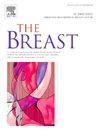Integration of translational research in phase III trials: A systematic review of breast cancer studies in a 5-year period
IF 5.7
2区 医学
Q1 OBSTETRICS & GYNECOLOGY
引用次数: 0
Abstract
Background
Samples' collection for translational analyses in phase III trials requires a huge effort and there is no evidence on how it translates into new knowledge on tumour biology or optimization of patients’ selection. We systematically reviewed phase III trials in breast cancer (BC) to evaluate how frequently a translational project has been integrated into their design and how this integration translated into new translational evidence.
Methods
Interventional phase III trials evaluating anticancer drugs in BC published in 11 major journals between 2014 and 2018 were included.
Results
89 BC phase III trials were identified, 3 had no sample collection. Among the others, in 36 % the information on sample collection for research purposes was not clear while more than half of the samples had definitive evidence of it.
After a median follow-up of 87.9 months, 55.8 % studies published translational data with a mean number of 1.31 (SD 1.7) and 1.07 (SD 1.8), congress abstracts and secondary papers, respectively.
There was a higher probability of published translational results for studies with positive outcomes (68.6 % vs 47.1 %), clear evidence of sample collection (72.2 % vs 28.1 %), well-established translational endpoint (73 % vs 42.9 %) and higher impact factor journal (IF) for the clinical publications (64.5 % vs 33.3 %). Secondary translational papers were usually published in lower IF journals with a significant delay from the clinical publication.
Conclusions
Although extremely resource-demanding, sample collections for translational analyses in phase III trials are frequently not well defined, and only 50 % produce new translational evidence, which is delayed in time and published in lower IF journals.
III期临床试验转化研究的整合:5年来乳腺癌研究的系统回顾
在III期试验中收集用于转化分析的样本需要付出巨大的努力,并且没有证据表明它如何转化为关于肿瘤生物学或优化患者选择的新知识。我们系统地回顾了乳腺癌(BC)的III期试验,以评估一个转化项目被整合到其设计中的频率,以及这种整合如何转化为新的转化证据。方法纳入2014年至2018年间发表在11种主要期刊上的评估BC抗癌药物的常规III期试验。结果89例BC III期试验,3例未采集样本。其中,36%的研究样本收集信息不明确,而超过一半的样本有明确的证据。中位随访87.9个月后,55.8%的研究发表了平均1.31篇(SD 1.7)和1.07篇(SD 1.8)的翻译数据,分别为会议摘要和二手论文。具有积极结果的研究(68.6%对47.1%)、明确的样本收集证据(72.2%对28.1%)、确定的翻译终点(73%对42.9%)和临床出版物的高影响因子期刊(IF)的发表概率更高(64.5%对33.3%)。二级翻译论文通常发表在较低影响因子的期刊上,与临床发表有明显的延迟。结论:III期临床试验中用于转化分析的样本收集虽然非常需要资源,但往往没有很好地定义,只有50%的样本产生了新的转化证据,这些证据被及时推迟并发表在较低IF期刊上。
本文章由计算机程序翻译,如有差异,请以英文原文为准。
求助全文
约1分钟内获得全文
求助全文
来源期刊

Breast
医学-妇产科学
CiteScore
8.70
自引率
2.60%
发文量
165
审稿时长
59 days
期刊介绍:
The Breast is an international, multidisciplinary journal for researchers and clinicians, which focuses on translational and clinical research for the advancement of breast cancer prevention, diagnosis and treatment of all stages.
 求助内容:
求助内容: 应助结果提醒方式:
应助结果提醒方式:


